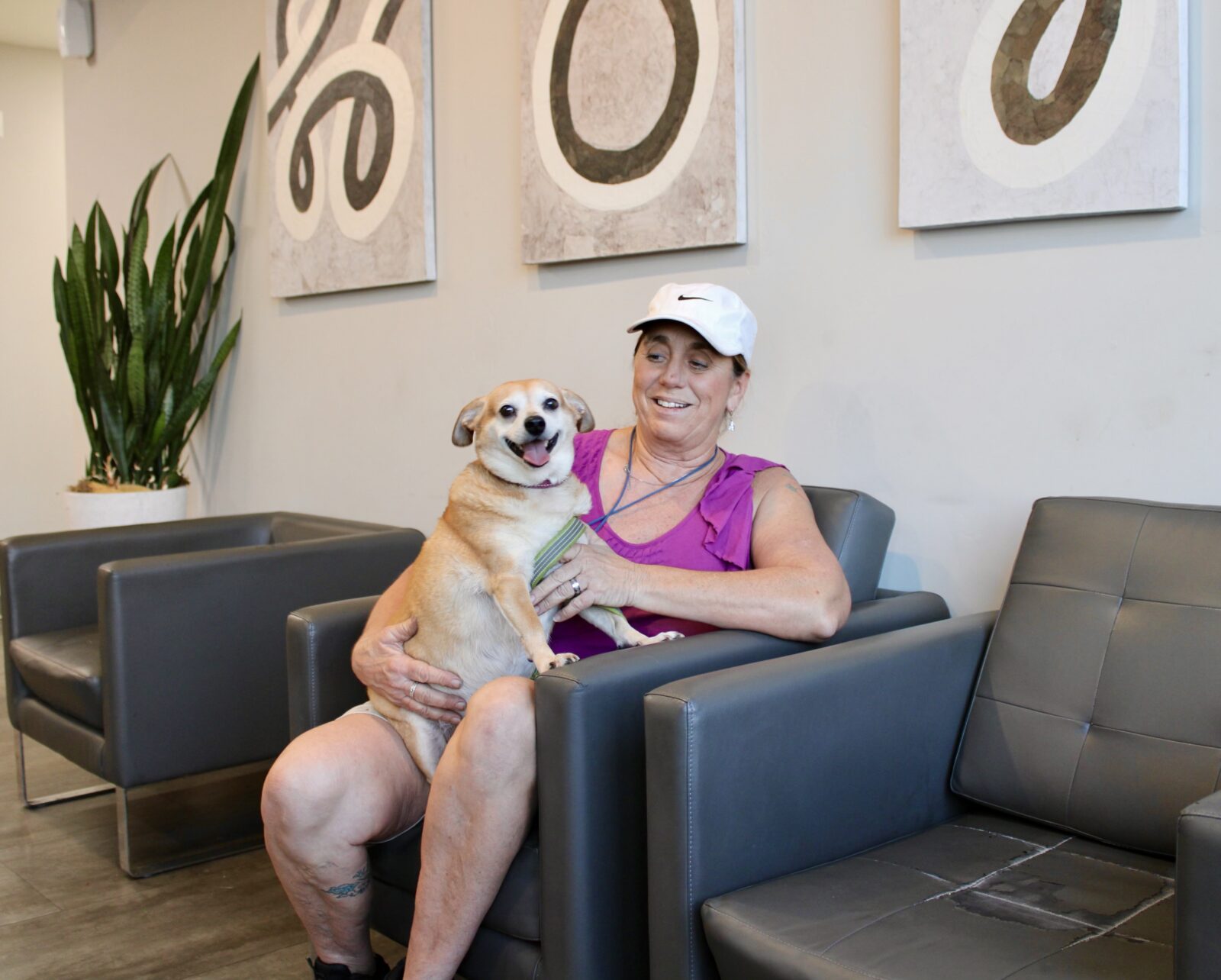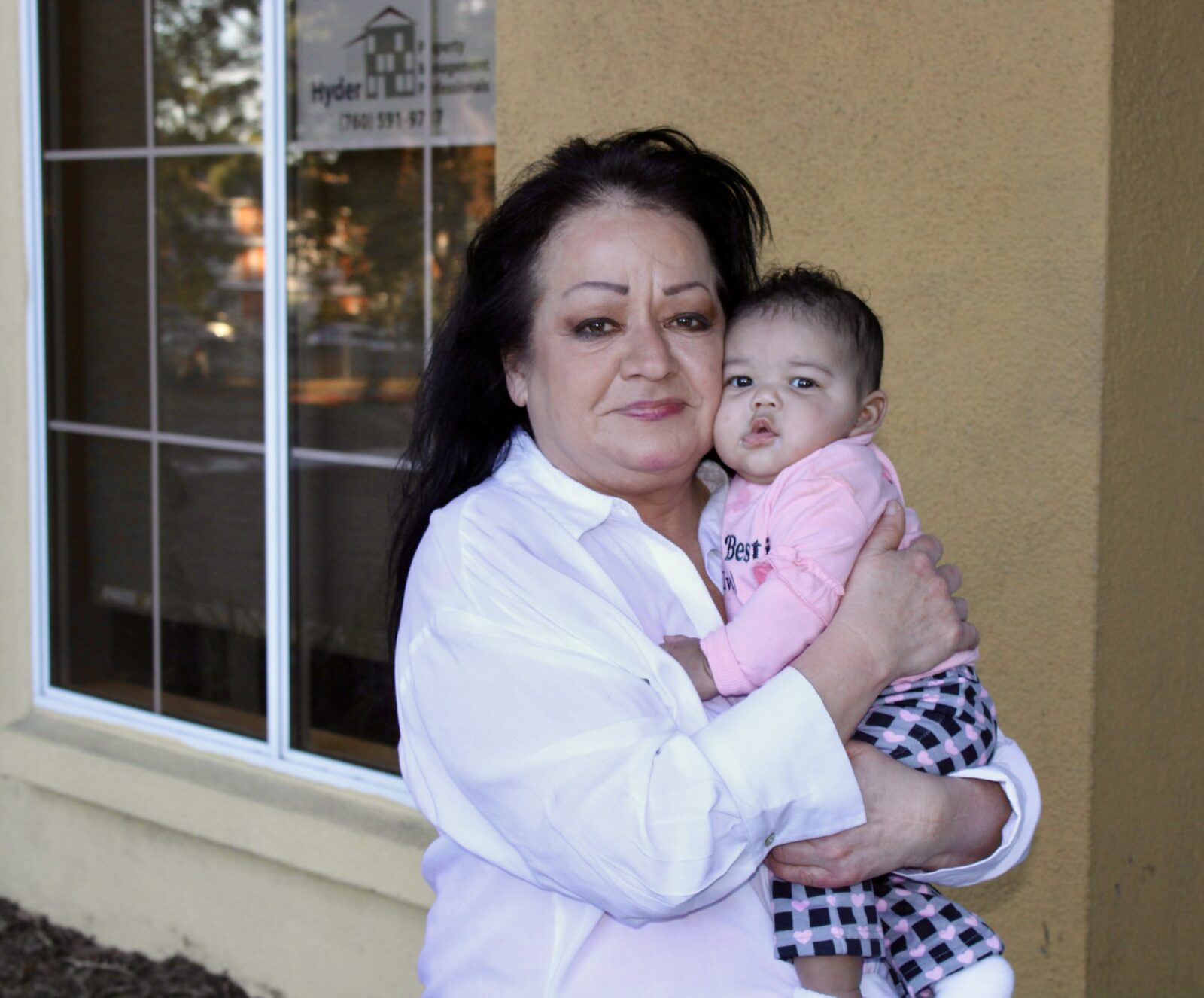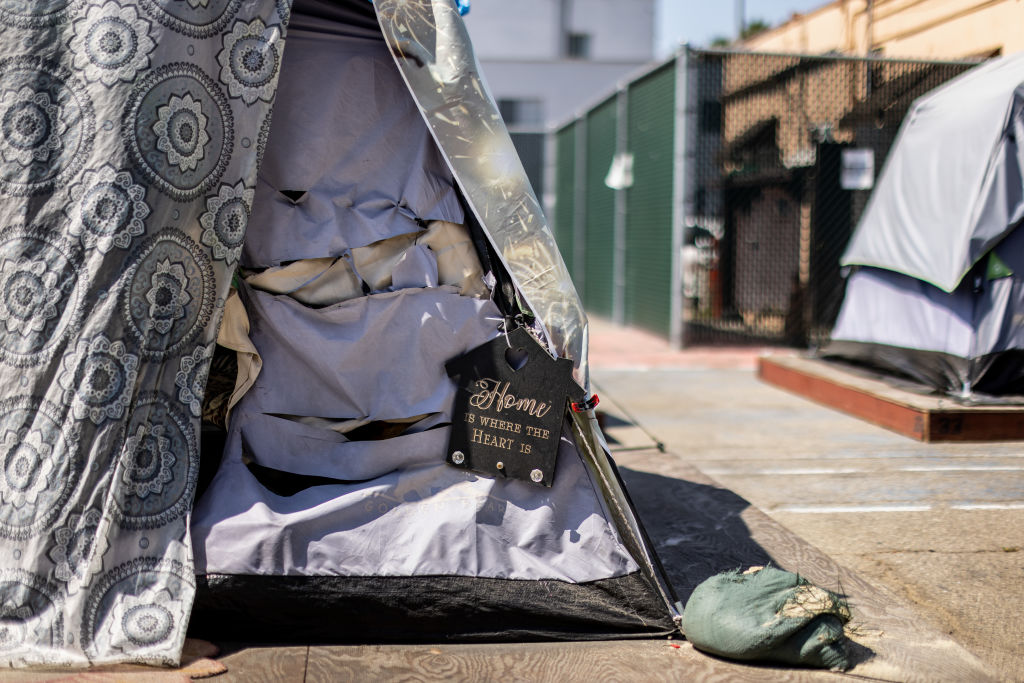SAN DIEGO: Lynda Reed loved her work in the research office of San Diego’s Naval Medical Center, but when her mother’s health began to falter she quit and became a full-time caregiver, moving in with her mother. She cooked her diabetic meals, administered medications, drove to medical appointments, and helped with housekeeping and daily living – full time work with no pay at all.
Then, in 2019, her mother died. Her mother’s house was sold — and a combination of a family trust dispute and their inability to keep up with the mortgage payments left her with nowhere to live. At 55 years old, Reed found herself homeless, living in her truck.
“People don’t realize the sacrifices that you make as a caregiver,” says Reed. “You’re putting yourself at such risk because not only are you isolated from any kind of socialization, but your financial situation is really screwed up.”

Homelessness is a phenomenon that historically has predominantly impacted men. But in California, where the number of homeless people surged to 181,000 this year, the number of homeless women has also grown. Newly released data from the Department of Housing and Urban Development show 60,000 unhoused women in the Golden State in 2023 — nearly as many as New York, Texas, and Florida combined, and an increase of over 50 percent over the previous eight years.
This rise poses a test for state policymakers, who must cope with an increase in groups that face unique challenges, such as domestic violence survivors, pregnant women, and mothers. Last year, Gov. Gavin Newsom signed a bill that proponents say makes California a national leader in addressing the needs of unhoused women. But despite the new law, the problem in California keeps getting worse.
Rose Impson says she ended up homeless after trying to work things out with a series of abusive partners and an abusive relative. The final straw came when the relative cracked a glass candlestick-holder on her head, she says.
“One of us was going to die. I just packed a bag and left,” says Impson. The former hotel manager, now 63, says she had to be on guard while sleeping on the sidewalk in downtown San Diego. She’s been robbed and sexually assaulted, she says. Impson says she started braiding her hair with razor blades so that if attackers “want to pull your hair, they’d cut their fingers,” and slept with a knife.

Homeless women with children face a particularly difficult choice. Worried about exposing their children to living on the streets or having their children taken away by child protective services because they can’t provide material needs, many decide to leave them with family instead. But then the housing system perceives them as “single homeless adults” instead of a “homeless family,” reducing their chances of qualifying for family housing.
An estimated 40 percent of homeless women aged 18-24 are pregnant, according to a recent University of California study on homelessness in the state. Women who are pregnant or with children while homeless, can be forced to choose between living with or separately from their children to protect them from homelessness.
“What we heard from those women was the ways in which that restrained their housing because in the homelessness world you’re sort of judged as either a single homeless adult if you’re not living with your kids or a homeless family,” the lead researcher on the study, Dr. Margot Kushel says. “They didn’t have a shelter to bring their kids to when they became homeless and so they parked their kids with someone.”
Meanwhile, domestic violence, which spiked during pandemic lockdowns, is a major driver of homelessness among women. In Los Angeles, nearly 30 percent of homeless women attributed domestic violence or intimate partner violence as the most common reason for leaving permanent housing, according to a study by the Urban Institute released this summer.
Hanan Scrapper, San Diego regional director for the non-profit People Assisting the Homeless (PATH), said nearly half of the women served by her agency had experienced domestic violence at some point in their lives. “They’re not necessarily coming to us when they’re actively fleeing domestic violence, but they might have become homeless leaving a domestic violence situation and had been on the street for a while,” she says.
Impson managed to move off the streets and into a room in a hotel that had been converted into permanent supportive housing with the help of her case manager at PATH.
“There’s thousands of stories like Impson’s and a lot of them are born out of domestic violence,” says Monica Roy, Impson’s case manager at PATH. “I’m surprised she has survived. Unfortunately, a lot of other women get lost and they never find their way back.”
While homeless, Impson says she actively sought assistance from programs, shelters, even police officers, and trashmen. Sometimes, she secured a bed or a free meal, even counseling. But she felt the system was confusing and not resourceful enough to get her off the streets.
“There’s a huge shortage of domestic violence shelters across the state,” says Kushel. “And a shortage of permanent solutions meaning if you run into a domestic violence shelter and they can’t find any place for you to move to, then you just stay there, and then there’s no room for the next person.”
The Homeless Equity for Left Behind Populations (HELP) Act, which Newsom signed last fall, requires California institutions that receive state funding for supporting homeless populations to incorporate the needs of domestic violence survivors and unaccompanied women into their systems. The new law also requires the California Interagency Council on Homelessness to measure progress towards goals to prevent and end homelessness for these vulnerable populations.
In a statement, Democratic state Senator Susan Rubio, who authored the bill, said it “makes California a national leader by including gender equity in homelessness responses.”
But advocates like Dietz and Kushel still call for a more robust, well-funded domestic violence system and more permanent housing solutions, such as Project Homekey, an initiative launched during the pandemic that provides government agencies with funds to purchase and rehabilitate hotels, motels, and vacant apartment buildings and convert them into permanent, long-term housing.
Advocates say this form of affordable, permanent, long-term housing is especially crucial for pregnant women and women with children.
Kushel and the advocates at PATH call for an increase in resources such as non-congregate housing for women, and family-centered case management services that support mothers as they seek employment and long-term housing.
Today, San Diego native Reed is living in permanent supportive housing that she found through the help of her case manager at PATH.
She is applying to jobs, picking up side gigs painting and landscaping. She wishes there was more employment assistance for women like her, stressing that it can be difficult to transition from being unemployed to working full-time under her circumstances.
“It seems like they should be able to evaluate people as they come into the [PATH] program and get them into work as soon as possible so they can be functioning,” says Reed. “I just needed a hand up, not a hand out.”


 Sarah McClure
Sarah McClure
